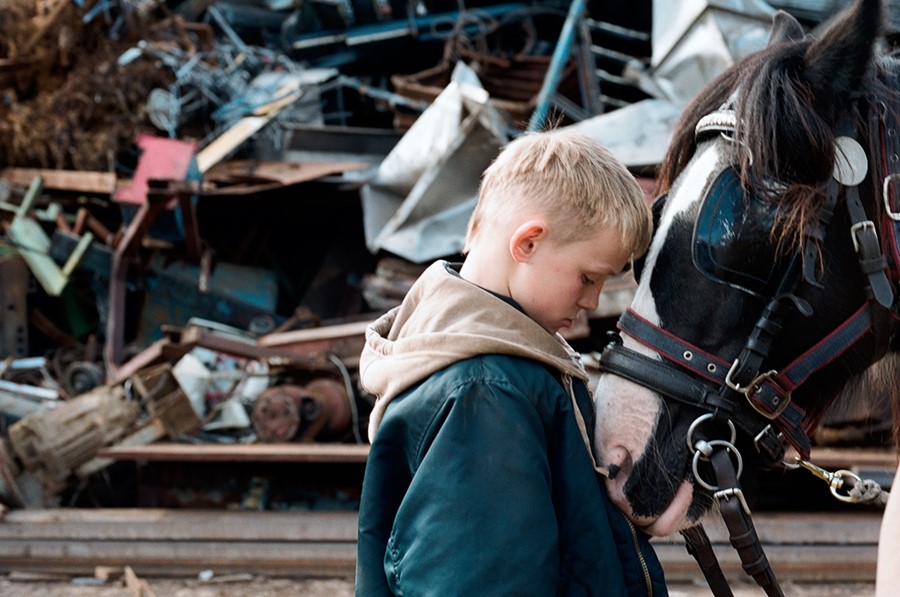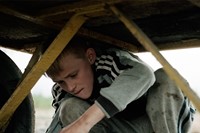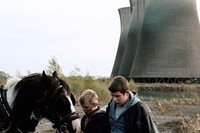We meet Clio Barnard, the director being hailed as a modern Ken Loach for her newly released film, The Selfish Giant – a stark but beautifully poetic take on Oscar Wilde's children's story
In 2010 British director Clio Barnard burst onto the scene with her incredibly accomplished debut film The Arbor, an innovative exercise in “verbatim cinema” that tells the tale of Bradford playwright Andrea Dunbar. Myriad awards and glowing reviews followed. And so it must have been with a degree of trepidation that she awaited the reception of her second feature – a modern take on Oscar Wilde’s children’s story The Selfish Giant. Happily however, the film has proved a resounding triumph, meeting with widespread acclaim after its premiere at Cannes and mainstream release last week.
It is, in Barnard's own words, a "realist fable" of best friends Arbor and Swifty, teenage boys growing up in a deprived part of Bradford. Following their exclusion from school, and with families struggling under financial pressures, they enthusiastically resolve to make money scrapping for a dodgy dealer called Kitten (Sean Gilder) whose scrap horse Diesel is a welcome bonus for horse fanatic Swifty. What unfolds is a brilliant exploration of youth and the loss of innocence at the hands of adult neglect, propped up by outstanding performances from the lead actors Conner Chapman (Arbor) and Shaun Thomas (Swifty), neither of whom had acted before. Moving but funny, stark but poetic, and with breathtaking cinematography, the film has seen Barnard compared to the king of social realist drama Ken Loach, and with good reason. Here, we speak to Barnard to discover more about her inspirations for the film and how she feels about being placed in the social realist category.
What were the key inspirations behind the film?
It was two things really, the fairy story by Oscar Wilde and a boy called Matty – who I met when I was making my previous film, The Arbor – and his relationship with his best friend. Both of them work for a dodgy scrap dealer who’s also a moneylender and there was an ambiguity about whether he was exploiting them or giving them opportunities.
I met Matty doing workshops in a secondary school – he was 14 at the time and very charismatic and kind of volatile. And then, when I went down to Grafton Arbor [the street where The Arbor was filmed] for the first time, he was there fixing something on his house, wearing his rigger boots – the way Arbor dresses in the film. And then over those two years I got to know him and his extended family really well.
And how did Wilde’s story come to play a role in the film…
Broadly speaking it’s about what gets lost if you exclude children, and also about the moods of love. And I had the idea of putting these two things together that seemed quite incongruous. Quite quickly I knew who the children in the story would be – that it would be Matty and Michael – but it took a while to figure out that the giant was this scrap dealer. And I think, once that fell into place then I could see how it was going to work. And then the first draft of the script was written really from the giant’s point of view, it was much more like the original story, but then I realised I was much more interested in the two boys than I was in the giant.
"The first draft of the script was written from the giant’s point of view, like the original story, but then I realised I was much more interested in the two boys"
Tell us about the casting process and your decision to cast kids who hadn't acted before...
Well I did do some casting sessions with trained child actors but I knew that I wanted children who were from that very specific place. Conner we saw on the first day of casting in a secondary school and there was something about his voice that drew me to him and then I saw him several times after that and he told brilliant stories about his life and it sounds like a terrible actor cliché, but he’s very truthful when he performs. Initially we were looking to cast him as Swifty and we were looking for an Arbor, but then we found Shaun and realised he had this very strong affinity with horses and he’d been scrapping since he was eleven. So at the last minute I swapped them round.
You come from a fine arts background and have made a lot of shorts playing with different genres and forms, and then documentary, and now fiction. Have you developed a preference for one genre?
I’d never made a straightforward narrative fiction film before I did this one and I liked doing that, and the next two projects that I’m involved with are both narrative fiction. With The Arbor it wasn’t to do with the form it was to do with the content. I felt such a weight of responsibility in terms of representing real lives and in a way that was what the formal techniques in the film were trying to address – how difficult that is and how elusive the truth is. I didn’t feel that weight with The Selfish Giant, even though there were real people involved with it – Matty and Michael and their families. But because it’s fiction, and things happen in it that aren't real, I think in some ways that protects people.
What have they made of the film?
Matty and his mum were very involved right from the beginning. We did workshops in Matty’s house and the scene where he asks the policeman to take off his shoes – that’s Matty. We got an actor pretending to be a policeman to come knocking on the door and that’s what Matty did – “take your shoes off!”
How deliberate were you about working within the tradition of social realist drama?
Well the films that I was looking at while I was making it were films I was watching with my own children and they were realist fables so The Bicycle Thieves, The 400 Blows, A Kid with a Bike and The Apple and Kes. And in a way I guess I see it within that category – they’re realist fables that are about children and for children.
The horses in the film seem to be a repository for love – they are very watching and knowing. Did you reference other films where animals play that kind of role?
Well I guess the obvious one that keeps cropping up is Kes and the role of the kestrel in Kes. Oddly, a thing I thought about more than the horses in a way were the pylons and the cooling towers because they have a really strong presence that isn’t necessarily a sinister presence but a very powerful and sturdy and steady one to me. But I think the horses, especially the scrapping horse, has that quality to it. They were lovely to have on the set.
The Selfish Giant is currently showing at cinemas nationwide.



